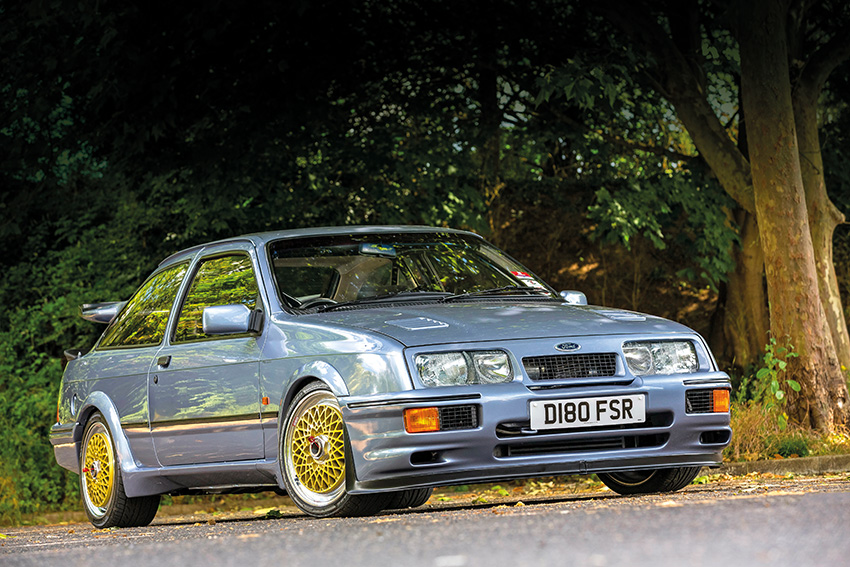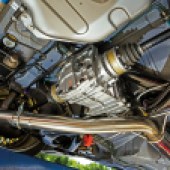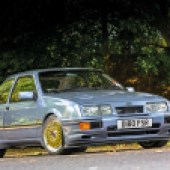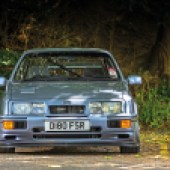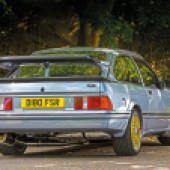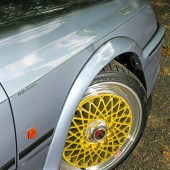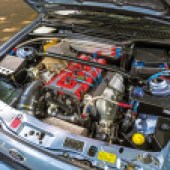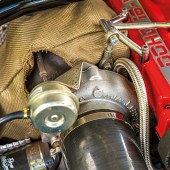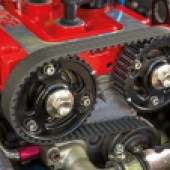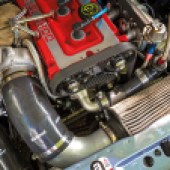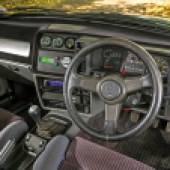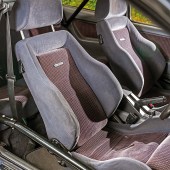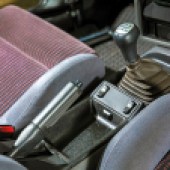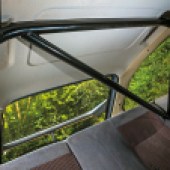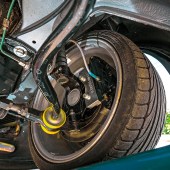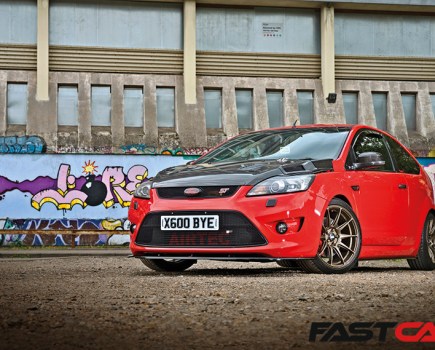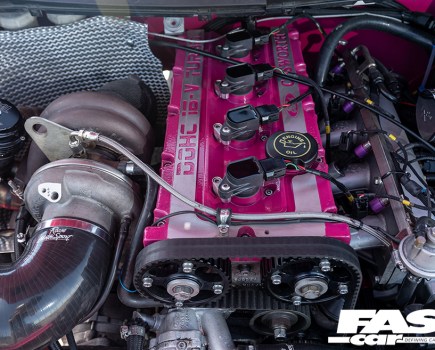The Ford Sierra RS Cosworth may be firmly in the sights of classic collectors these days, but with the right tuning tweaks, the original three-door Cossie will still show modern fast Fords a thing or two.
The original. The icon. The legend. The Sierra RS Cosworth arrived in a fanfare of media hype, complete with massive rear wing, motorsport success, and notorious tag as the most stolen car in the UK. And that was before the tuners and enthusiasts got hold of it.
Few cars have the road presence of the three-door Cossie, and those classic looks, combined with the tail-happy rear-wheel-drive layout and easy-to-tune YB motor, soon saw the Cosworth develop a cult following – to be crowned king of the cruise scene during the Nineties and Noughties.
Things have come full circle since, and – sadly for those of us who love driving – many Cossies have been returned to standard specification to increase their value, and the very best examples seldom see daylight.
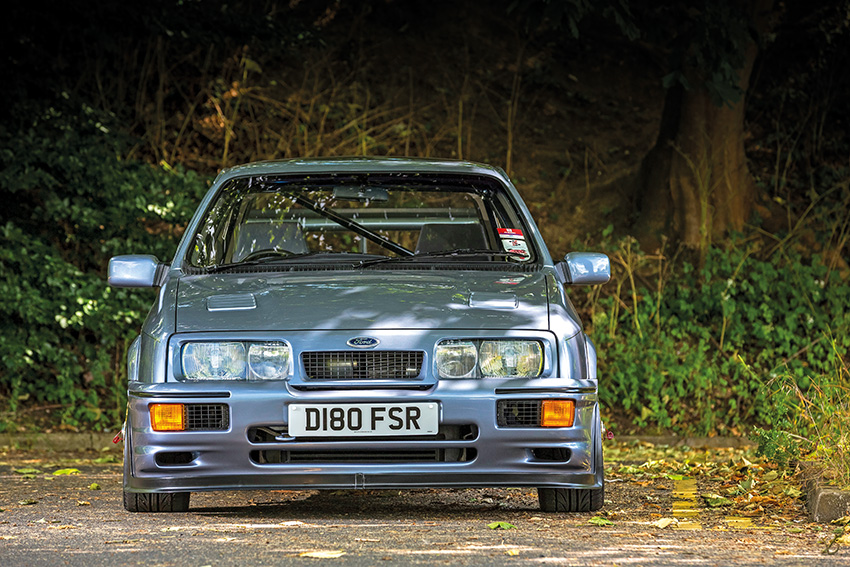
And that’s a crying shame, because the Sierra RS Cosworth is still one of the best fast Fords to tune and modify, even 35 years after it was in the showrooms. Constant development has seen a continuous wave of performance upgrades come to the market, and they’ve not all been focused on extracting more power from that immensely tuneable engine. Yes, there are parts available that will allow you to build an engine capable of 1000bhp, but some of the most impressive upgrades have been to the Cossie’s ageing electronics and chassis design, bringing the classic Sierra bang up to date in terms of reliability and driveability.
There are loads of trusted specialists out there who will see you right, and a surprising number of performance parts still being manufactured. You’ll never beat the classic 1980s’ styling, but you can do a whole load to improve the way the Cossie drives. Here’s our Ford Sierra RS Cosworth tuning guide.
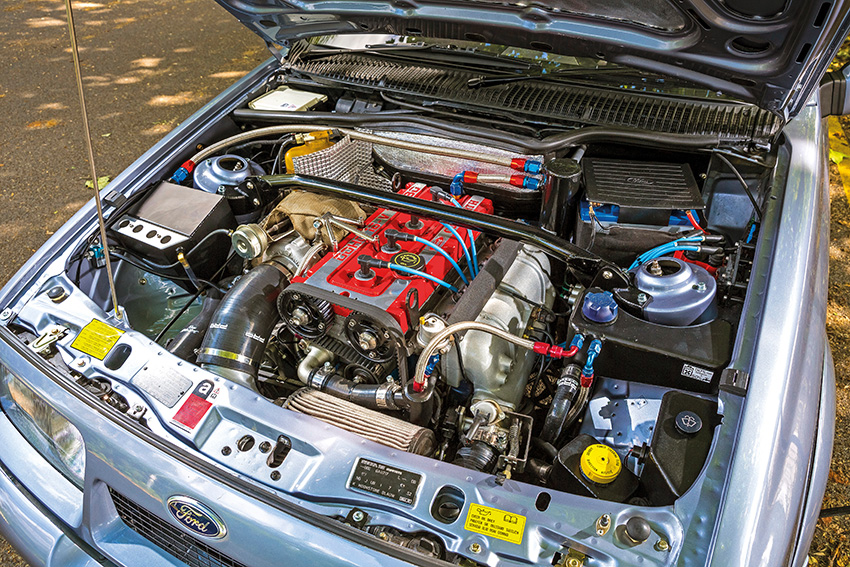
Ford Sierra RS Cosworth engine tuning
The Cosworth YB is one of the most tuneable engines Ford has ever produced. In fact, although power was quoted at 204bhp, the majority left the factory with around 20bhp more. But that’s a drop in the ocean compared to what the YB is really capable of – even back when the Cossie was new, rally cars regularly produced 350bhp, while the all-conquering RS500 touring cars had upwards of 550bhp.
Block and Internals
The YBB engine as found in the original Cossie can cope with decent hikes in power, but the later engine block from the 4×4 Sapphire (recognised by its ‘200’ casting on the side rather than ‘205’) features thicker walls and is capable of withstanding even more abuse. The RS500 had a similar thick-wall block and ‘205’ stamp (recognisable by smaller core plugs), but these command strong money from RS500 restorers these days.
Most traditional big-power YB builds used to be based on the 200 block, machined to accept Nikasil liners and either six or ten long studs depending on the target power level. Some tuners even added under-piston cooling oil spray jets too.
Today, finding a donor block can be tricky, and the costs of machining can soon mount up. One solution is to buy a brand-new Smith and Jones Engineering block (either iron or alloy), which are available in varying bore sizes (from standard 90.82mm up to a whopping 96mm) and are also available with different deck heights for those looking to lengthen the stroke too. They aren’t cheap – starting at £5000 – but have been proven to work reliably at crazy power levels.

The good news is that for modest sub-500bhp builds, the original crank, conrods and pistons can all be retained. The reality, though, is that most YB cranks have been reground by now, and each grind makes the whole thing weaker. An original-grind YB crank will cost almost as much as an aftermarket forged item – like the Farndon version available from Burton Power for £1830.
Many engine builders also prefer to fit slightly longer conrods (136mm as opposed to stock 128mm) to generate a more favourable rod angle and free up a little more power (as much as 8-to-10bhp in some cases.)
It’s a similar story with the pistons too: the originals have been proven to work well on 400bhp engines many times over, but when altering the compression ratio or using valve cut-outs (needed for engines running anything more aggressive than BD10 cams) the machining costs in addition to the £150-per-piston can add up and will cost roughly the same as a set of forged items.
Head and Cams
The top end of the YB engine is impressive and 350bhp is no problem for a stock head, but at around 500bhp the ports start to become a bit of a restriction. Opening these up to around 25mm (inlet) and 24mm (exhaust) will be good enough for 500bhp while retaining standard valve sizes. For even more power, the port sizes can be increased to 26/27mm and 25/26mm, but you’ll also need bigger valves to make the most of them.
There are plenty of off-the-shelf cam profiles to choose from, and many engine builders have cams ground to their specific requirements too. But generally, a BD10 inlet with standard exhaust cam is seen as the first-stage upgrade and works well on a variety of engines. More aggressive BD14 and BD16 combinations have also been used to good effect, while some tuners swear by the AB07 profile cams. The cam profile needs to be chosen to work with the rest of the engine spec, so is often best left to the engine builder to decide.
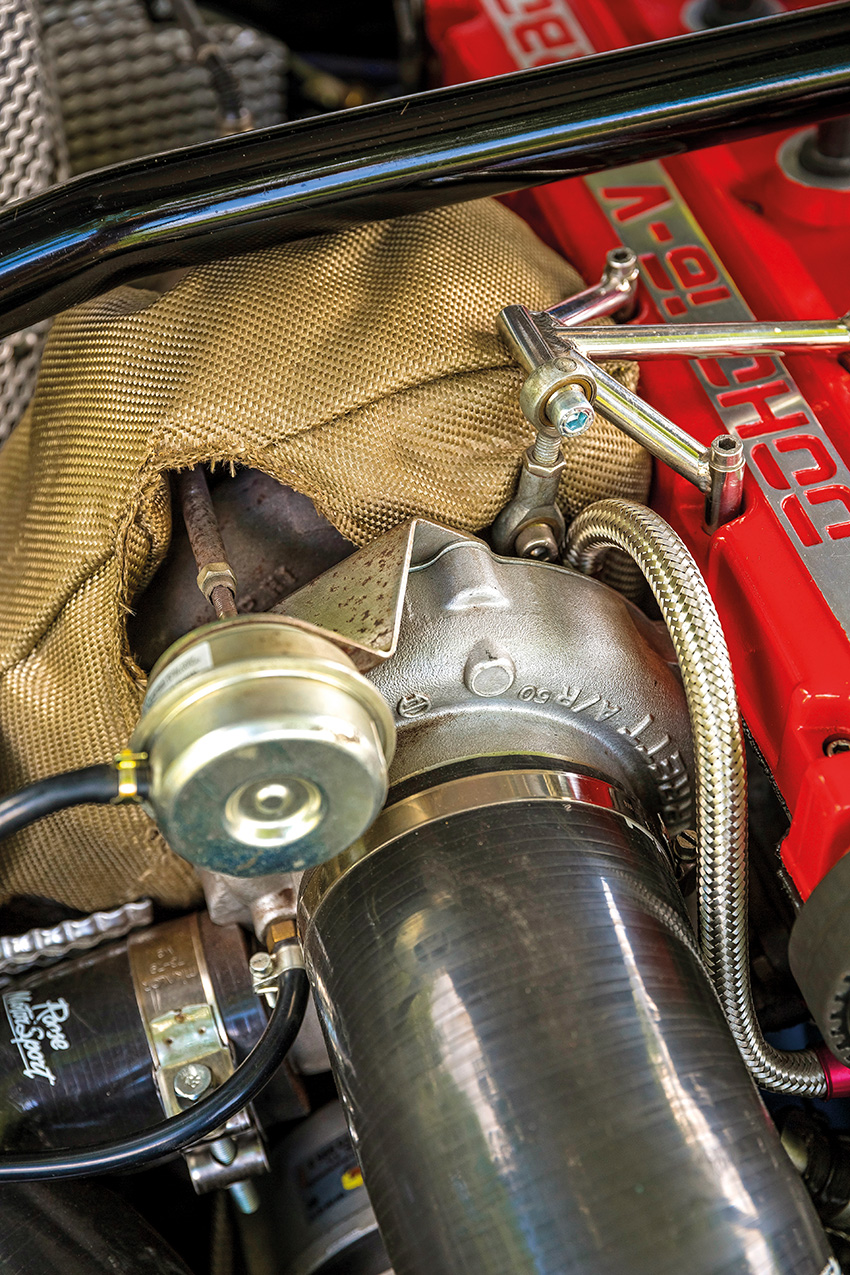
Ford Sierra RS Cosworth turbo tuning
The traditional route used to be sticking with the Garrett range: working up from a T3 to T34, before eventually fitting the massive T4. Of course, there are all kinds of variations of hybrids in between, where specialists can play mix-and-match to create something that suits. The T3 is good for up to 330bhp, a T34 will take you into the 400s, whereas for 500bhp you’ll want that gigantic T4.
But these days turbocharger choice is so much more varied. Specialists offer custom billet compressor wheels and clever machining tricks to further tweak things, and there’s a huge selection of modern turbos to choose from (such as the latest Garrett G-Series and BorgWarner’s EFR range) that will provide enough boost for whatever power levels you’re after and significantly reduce lag compared to older style turbos.
The good news is that the YB’s exhaust manifold is of a twin-scroll design as standard, so is ready to accept a modern twin-scroll turbo without too much fuss. Bigger turbos often require a larger mounting flange though, so it’s often worth upgrading to a tubular exhaust manifold at the same time. Doing so also makes installation of an external wastegate easier, which many tuners prefer over the OEM-style internal wastegate to offer more accurate boost control.
Inlet and Injectors
YB inlet manifold choice has improved drastically over the years: the RS500’s eight-injector setup was essential for big-power engines, but with better engine management systems and modern injector designs, today the same flow rates can be achieved with just four injectors without adversely affecting idle quality or low-speed running. The stock inlet does become a restriction at around 500bhp, but alternatives such as the popular Hart-style inlet are readily available.
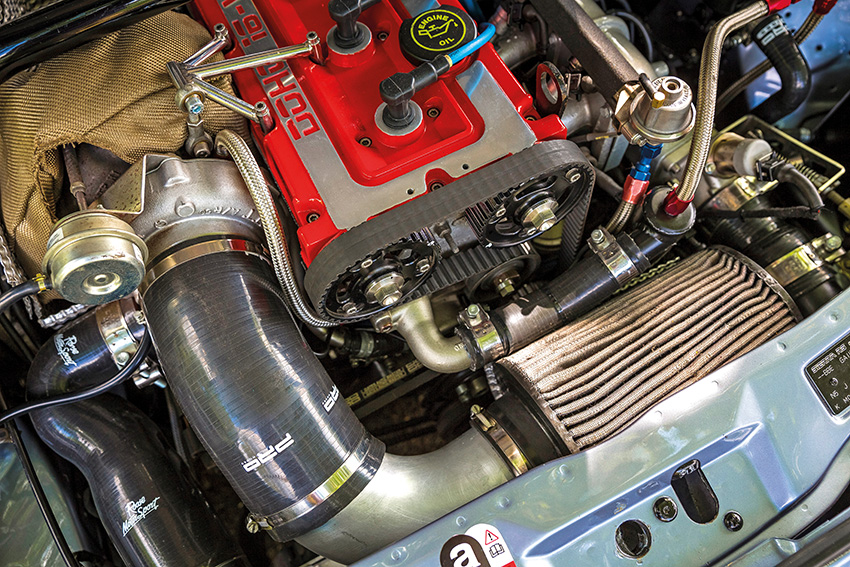
Ford Serra RS Cosworth engine management tuning
Long gone are the days when a simple Stage 3 ‘chip’ is the way to go. Nowadays, with massive advances in technology, owners expect a lot more refinement, even from the standard ECU. Features such as closed-loop lambda control, wasted-spark ignition, and the ability to live map were pioneered by Motorsport Developments back in the Noughties, and have made big improvements, especially for fast-road applications. On top of this there is now a wealth of stand-alone aftermarket ECU systems to choose from, all of which are more than capable of running a YB engine.
It is also worth noting that one major factor in changing to an aftermarket ECU is not just because of the additional mapping features, but because it also replaces the standard wiring loom – something which, now it’s all old and crusty, can cause major problems. Thankfully, companies like Auto Dynamix now offer OEM-style replacement wiring looms, or bespoke items to suit your specific setup.
Modern ECUs also allow tuners to take full advantage of several advances in engine management design; things like coil-on-plug ignition, knock detection and electronic boost control all help aid reliability and performance, while extras such as launch control, full-throttle gearshifts and anti-lag systems all add to the grin-factor.
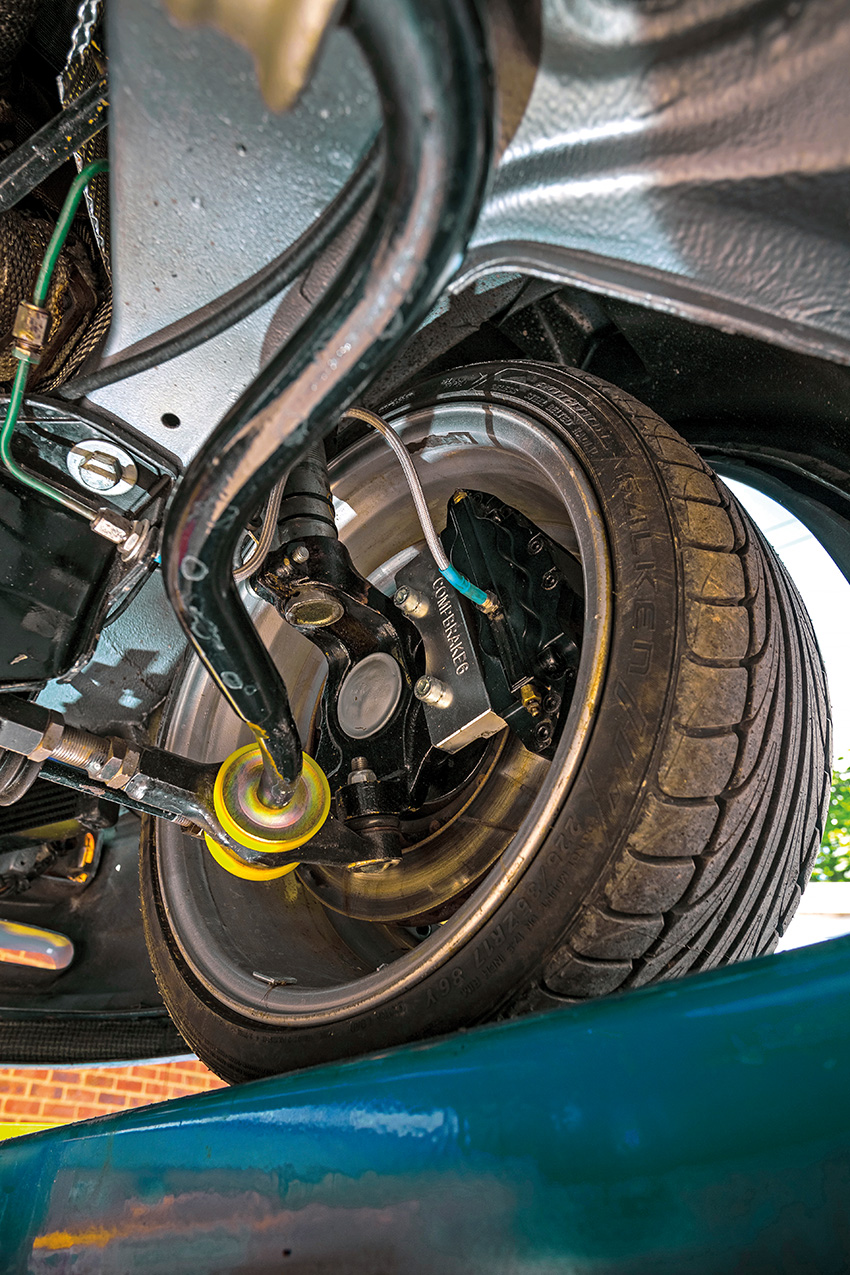
Ford Sierra RS Cosworth suspension tuning
A good set of dampers with matched lowering springs such as Bilstein’s B12 kit will drastically improve the roadholding and give a meaner stance, all without affecting ride quality. Coilovers are great for track users (just avoid anything that is too ‘budget’ and opt for a decent spec) but are often too harsh for road use.
The stock rubber bushes weren’t great when new, so after 30-odd years they’ll be shot to pieces. Polyurethane upgrades offer a fit-and-forget solution that bring genuine performance improvements. As with coilovers, solid bushes and rose joints are common on track and race cars, but are detrimental to ride quality on road cars.
One area that you should spend your money is addressing the Sierra’s inherent tendency to pull the rear wheels inboard when the rear suspension is compressed. The Cossie may have a brutish charm to the way it savagely puts its power to the ground, but the reality is a modern hot hatch will run rings around a stock Sierra. This is all to do with the standard geometry; as the rear of the car squats under load or through the corners, the rear tyres offer less grip because less of it is in contact with the road.
But it needn’t be that way. A six-degree rear beam readjusts the geometry to help keep the tyres flat to the ground as the suspension is compressed, and owners say totally transforms the way the Cossie drives.
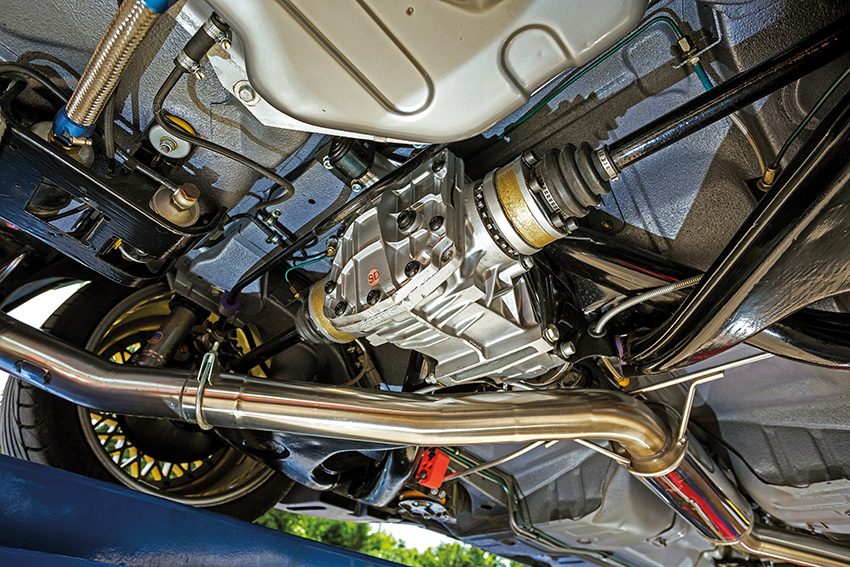
Ford Sierra RS Cosworth transmission tuning
The Cossie’s BorgWarner T5 gearbox is a tough old unit, if a little agricultural by modern standards. It will happily deal with most things a road car can throw at it, and rebuild kits are readily available from Burton Power for £565. But for added peace of mind, uprated Quaife gearsets are also on hand to beef-up the internals; available in standard (wide) ratios or close-ratio gears for around £2500.
There’s plenty of choice when it comes to clutch upgrades too, and if your Cossie is tuned beyond simple first-stage upgrades you’ll need one. For road cars, a heavy-duty organic is a better option, but big-power applications (or those that suffer frequent abuse) will likely need a paddle clutch. Retrofitting a hydraulic clutch conversion is said to make living with a hefty paddle clutch easier, so worthwhile on road cars.
At the rear, the stock 7.5in limited-slip differential will need some looking after. A simple rebuild and re-rating the viscous fluid works wonders on tired old units, but for maximum driving thrills, replacing the whole lot with a plated-type LSD from Gripper or Titan is the way to go. Serious track cars or racers may look to the Ford Motorsport 9in unit, but these are expensive and rare. Alternatively, companies like MK Motorsport and Anembo Engineering offer conversion kits to install a Toyota Supra rear diff into the Sierra beam.
Finally, there are a few fully-sequential transmissions from the likes of Elite and Quaife that will hook straight up to the YB for ultimate performance, but they don’t come cheap: prices start around £6000 and run into tens-of-thousands for top-level motorsport machines.
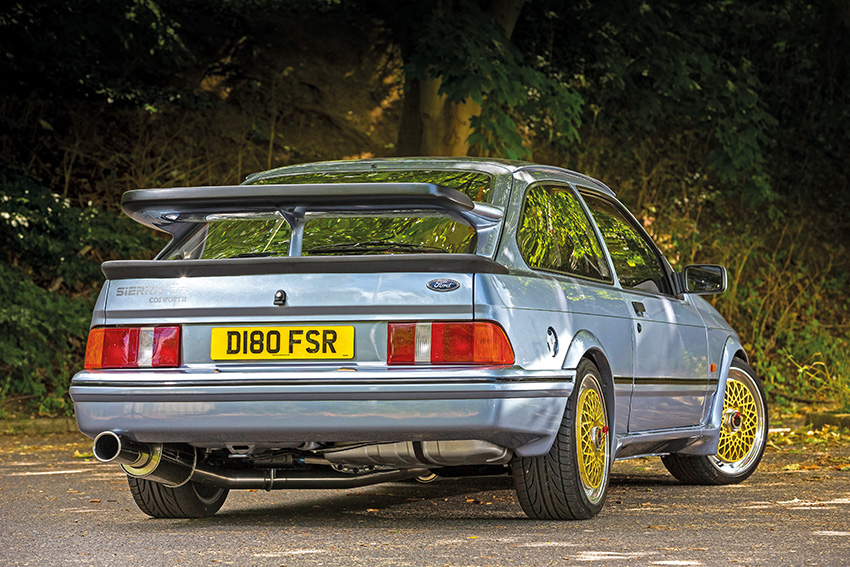
Ford Sierra RS Cosworth brake upgrades
The Cossie’s four-pot callipers and 283mm discs up front were decent in 1985, but will feel a bit weedy by modern standards. It’s easy to rectify; full rebuild kits are available, if necessary, but a set of decent fast-road pads and new discs will bring everything nicely up to date.
The stock callipers will cope with moderate power increases, but there are plenty of big brake kits available for the Cossie too. Not only do these look the part, they give awesome stopping power too. There are even smaller 295mm disc kits that fit under the stock 15in alloys, if that’s your thing. But you can’t beat a massive set of six-pots and 350s!
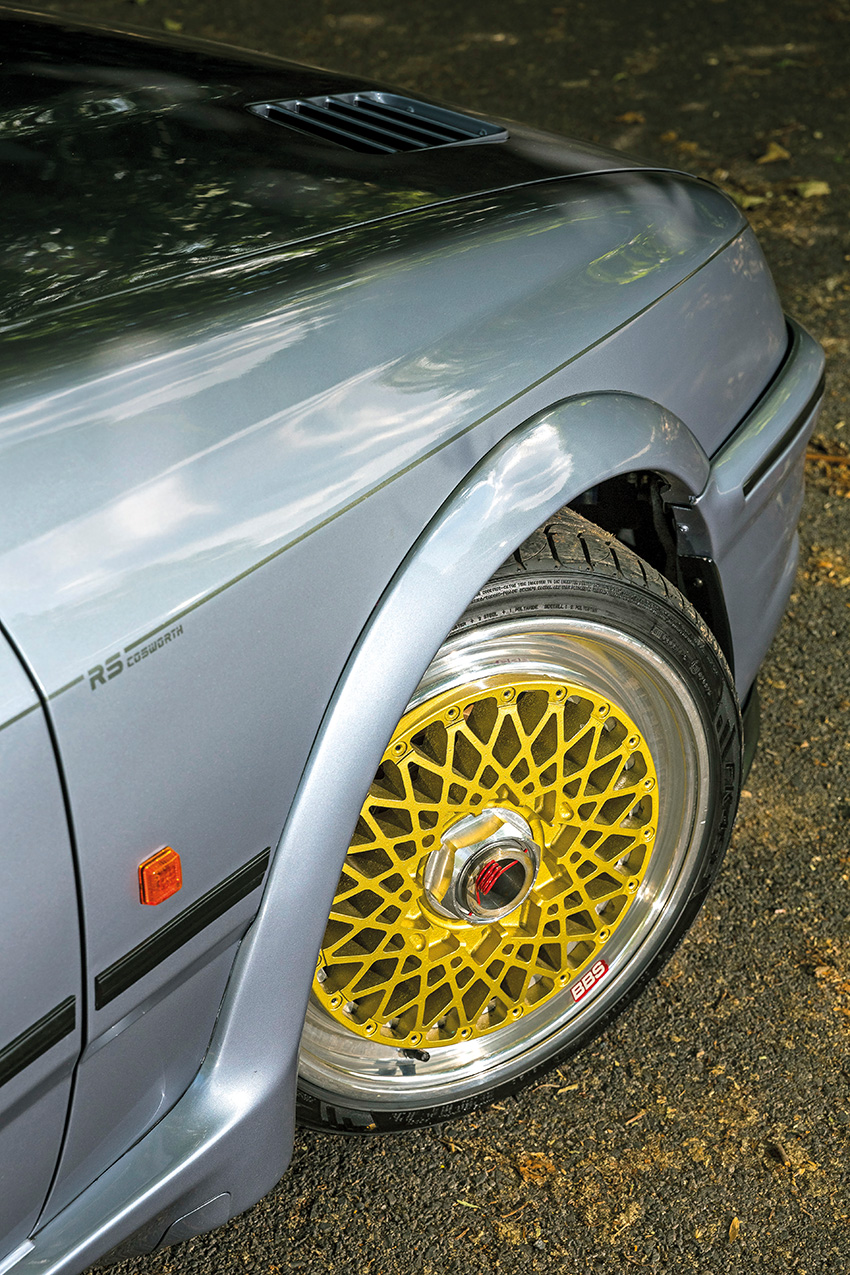
Ford Sierra RS Cosworth wheels & tyres upgrades
The stock Cossie wheels are a bit like Marmite; some people love them, and others hate them. Either way, if you’re looking to improve performance, there are better options out there. The standard 15in diameter does look a tad small, plus has knock-on effects for tyre and brake choices. Although 16s work well, many owners opt for 17s or even 18s; the latter may require some gentle trimming of the bodykit to prevent fouling, but you can’t deny look awesome.
There are loads of styles to choose from, but in our experience those with a motorsport vibe such as the Compomotive range, or even full-fat split-rims, can’t be beaten on a Sierra Cosworth.
The Sierra’s arches are quite narrow compared to modern performance cars, meaning 7in wide and 215-section tyres are going to be the maximum without further bodywork mods. Talking of tyres, just make sure you stick to quality performance brands.
Guide from Fast Ford magazine. Photos: Fast Ford Archives.

